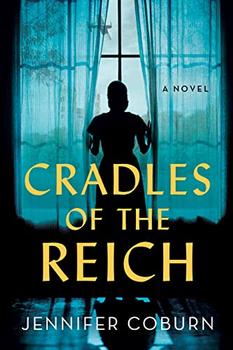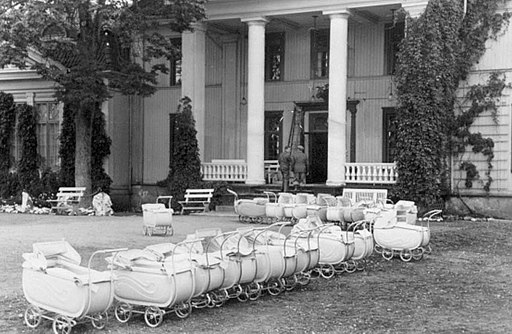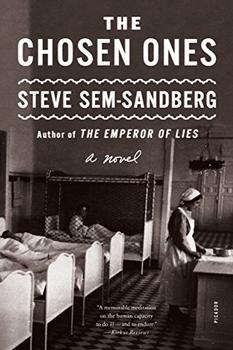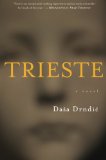Summary | Excerpt | Reading Guide | Discuss | Reviews | Beyond the book | Read-Alikes | Genres & Themes | Author Bio

A Novel
by Jennifer CoburnThree women, a nation seduced by a madman, and the Nazi breeding program to create a so-called master race.
At Heim Hochland, a Nazi breeding home in Bavaria, three women's fates are irrevocably intertwined. Gundi is a pregnant university student from Berlin. An Aryan beauty, she's secretly a member of a resistance group. Hilde, only eighteen, is a true believer in the cause and is thrilled to carry a Nazi official's child. And Irma, a 44-year-old nurse, is desperate to build a new life for herself after personal devastation. All three have everything to lose.
Based on untold historical events, this novel brings us intimately inside the Lebensborn Society maternity homes that existed in several countries during World War II, where thousands of "racially fit" babies were bred and taken from their mothers to be raised as part of the new Germany. But it proves that in a dark period of history, the connections women forge can carry us through, even driving us to heroism we didn't know we had within us.
Jennifer Coburn's latest novel, Cradles of the Reich, is a well-researched novel about Nazi Germany's attempt to breed "racially pure" babies to counteract the country's falling birth rate. Coburn is remarkably skilled at bringing this mostly forgotten Nazi-era program to the page with both depth and nuance. Both her research and her attention to period details are impressive. Although most have likely read at least something about the innumerable human rights abuses wreaked by Germany's fascist government, the author reminds us anew, in a truly visceral way, of the unfathomable harm a group of powerful leaders can inflict on a segment of the population if left unchecked...continued
Full Review
 (616 words)
(616 words)
(Reviewed by Kim Kovacs).
 Jennifer Coburn's novel Cradles of the Reich largely takes place in Germany's first Lebensborn ("Fount of Life") home, Heim Hochland. Germany's economic hardship following its defeat in World War I was a key factor in the National Socialist Party (aka the Nazi Party) gaining control of the country in 1933. Led by Adolf Hitler, the Nazi Party had as one of its chief aims creating a country of genetically superior citizens. They determined that one of the barriers to their goal was Germany's declining birthrate; 1915–1933 saw 14 million fewer births than 1896–1914. The Nazis initially enacted policies in the hopes of turning the tide; for example, women with large families were publicly rewarded, abortions ...
Jennifer Coburn's novel Cradles of the Reich largely takes place in Germany's first Lebensborn ("Fount of Life") home, Heim Hochland. Germany's economic hardship following its defeat in World War I was a key factor in the National Socialist Party (aka the Nazi Party) gaining control of the country in 1933. Led by Adolf Hitler, the Nazi Party had as one of its chief aims creating a country of genetically superior citizens. They determined that one of the barriers to their goal was Germany's declining birthrate; 1915–1933 saw 14 million fewer births than 1896–1914. The Nazis initially enacted policies in the hopes of turning the tide; for example, women with large families were publicly rewarded, abortions ...

If you liked Cradles of the Reich, try these:

by Steve Sem-Sandberg
Published 2017
Passionately serious, meticulously researched, and deeply profound, this extraordinary and dramatic novel bears witness to oppression and injustice, and offers invaluable and necessary insight into an intolerable chapter in Austria's past.

by Dasa Drndic
Published 2015
"A masterpiece" (A.N. Wilson), this many-layered novel of WWII combines fiction with a Sebaldian collage of facts to explore the fate of Italian Jews under Nazi occupation, through the intimate story of a mother's search for her son
Every good journalist has a novel in him - which is an excellent place for it.
Click Here to find out who said this, as well as discovering other famous literary quotes!